What’s Working: Demand Gen at Duo
By True Ventures, April 24, 2017
Non-marketers: Define demand generation.
If you’re quick to stumble over the term or confuse it with lead generation and other top-of-funnel marketing tactics, you’re not on an island.
In an article published by the Content Marketing Institute, B2B marketer Eric Wittlake argued that the term “demand gen” is often misused. “Demand generation is focused on shaping the audience’s perspective, while lead generation is focused on capturing their information,” wrote Wittlake.
Then again, what “demand gen” entails can also vary by company. Luke Retterath, senior director of demand generation for True-backed Duo Security, agrees: “Demand generation can mean different things depending on the organization, type of business, and sales approach.”
To learn more about demand gen, we interviewed Retterath about his role at Duo, an information security provider that helps organizations thwart account and data breaches. Here, he shares how to know if your startup is ready to hire a demand gen specialist, what to look for in candidates and even some “secret sauce” in terms of what demand gen tactics are proving successful at Duo.

True Ventures: Before you were the senior director of demand generation for Duo, what were you doing and how does that play into your role now?
Luke Retterath: My background was primarily in search marketing. I worked with a number of tech companies (Constant Contact, Zipcar, Carbonite, Equallogic and Workscape) in the mid-00s and then moved to the consumer packaged goods world for a few years.
Search marketing is a great background for any demand gen lead that is going to be focused on digital marketing efforts. Search marketers are typically very analytical, used to working in Excel, and have a natural bias toward direct-response marketing and measurement.
True: How is demand gen different from other top-of-funnel marketing tactics?
LR: Whether you’re in a high volume or a low volume business, the cornerstone of demand generation is a solid comfort level with data and analysis. To me, demand generation has been a boon for two groups in the marketing organization that may have otherwise felt underutilized.
The first group are those traditional marketing people that always had a passion for measurement but were too disconnected from the sales side to either have access to the data they needed or simply didn’t have a place in the organization that allowed them to drive change through the marketing/sales process.
The second group are those analysts that always felt like they had strategic input that they couldn’t effectively deliver because they were relegated to spreadsheets and graphs.
Some organizations will blend demand gen with account development or business development. At Duo, those functions sit on the sales side. An inbound account development representative (ADR) or business development representative (BDR) is going to serve in more of a lead qualification function while an outbound ADR or BDR is sometimes referred to as a “lead gen” specialist. From my perspective, these reps are using some of the principles of demand generation and applying those on a smaller (often 1:1) scale. In my current role, demand gen is a one-to-many effort.
True: At what stage should startups consider having a demand gen professional on staff?
LR: You can hire for this role as soon as you’ve established product/market fit. If you’re a SaaS organization and you’ve hit $1 million in annual recurring revenue (ARR) and are seeing some level of inbound interest, a strong demand gen hire will be able to jump in and accelerate that growth.
Personally, I’d be leery of joining an early stage organization that was unable to generate some initial volume of sales through founder/investor networks, but every situation is going to be different so there isn’t a one-size-fits-all approach.
True: Is demand gen a job for one person or a whole team?
LR: Demand gen can absolutely be done effectively by one person. At Duo, we had one dedicated demand gen role (which I filled) from $4 million ARR to more than $50 million ARR.
In the last six months, we have hired two additional demand gen team members. That being said, I had great support in the form of a strong creative team, field marketing managers, PR manager, and marketing operations when I was the only demand gen person on staff.

Photo: Duo’s demand gen team working together remotely.
True: What factors must be at play within an organizations for demand gen efforts to be successful?
LR: For one, access to sales. In order to be effective, the demand gen function needs to have relatively unfettered access to both the sales organization and sales data.
The organization must also have clear objectives. There needs to be alignment on the KPIs, not just between sales and marketing, which will be used to measure marketing performance. If there isn’t clarity, it creates a mess of reporting and incentives to pick and choose the metrics that look best at any given time.
If you’re tasked with driving leads, there should be very clear definitions of what a qualified lead looks like and what the target is. Everything else is just a diagnostic metric in service of the true objective.
You also need to feel ownership and have a budget. If you have confidence in the person running demand generation, there should be a certain amount of freedom and autonomy. If the objectives are clear, a good demand gen lead is going to build a plan that covers the basics while also testing new tactics and channels. Depending on the stage of the company and the size of the budget, there will likely be an 80/20 or 90/10 split between tried and true efforts and net-new tactics.
True: What demand gen tactics are you having the most success with?
LR: Free trials worked great early on, especially for smaller deals and SMB companies. As we moved up market, we had to change the mix of inbound leads. We’ve put a greater emphasis on gated content, trade shows and other activities that have shown themselves to be effective at capturing larger organizations or leads that are interested in a more strategic and less transactional sales process.
Our initial efforts on LinkedIn were disappointing and we moved away from it for nearly a year. As our media budget grew, I was able to revisit LinkedIn and run additional tests. With more budget behind them, the program was able to breathe a little more and ended up showing positive results.
“After 12 months of increased spend, we’ve turned LinkedIn into an effective channel for precise targeting and it has become our second highest pipeline generating advertising channel.”
If you’re in an existing market with a product that is solving a known pain point, paid search and SEO are almost always going to be the most effective channels. If the market is there, I would start with SEO (people resources) and paid search (marketing budget) first. Depending on the size of the market, you could build an effective program that would scale to six-figure monthly budgets in paid search alone before you would even need to consider looking at any other advertising efforts.
There are a lot of vendors out there that sell content syndication services. We have used half a dozen or so and have invested fairly significant budgets into them. We have not found this to be effective at driving high-quality leads. It’s an easy way to pump up your top-of-funnel numbers, but the actual value of the leads has been very poor for us. As such, we are not running any content syndication programs today.
True: Tell me about Duo’s engine in general.
LR: We have a bias towards velocity. We know that one of our competitive advantages is the ease and speed of deploying and purchasing our product. When considering process or technology changes, I have a very high resistance to anything that might add friction or slow down the process.
On the demand gen side, we really don’t do anything that can’t be measured. At some point, we will likely start investing in branding and awareness programs that won’t be directly measured and expected to immediately drive leads.
At this time, there is still an expectation that everything we invest in can and will be measured by the volume and quality of leads that are delivered.
Watch Luke’s presentation from True University, 2016. [Video]

